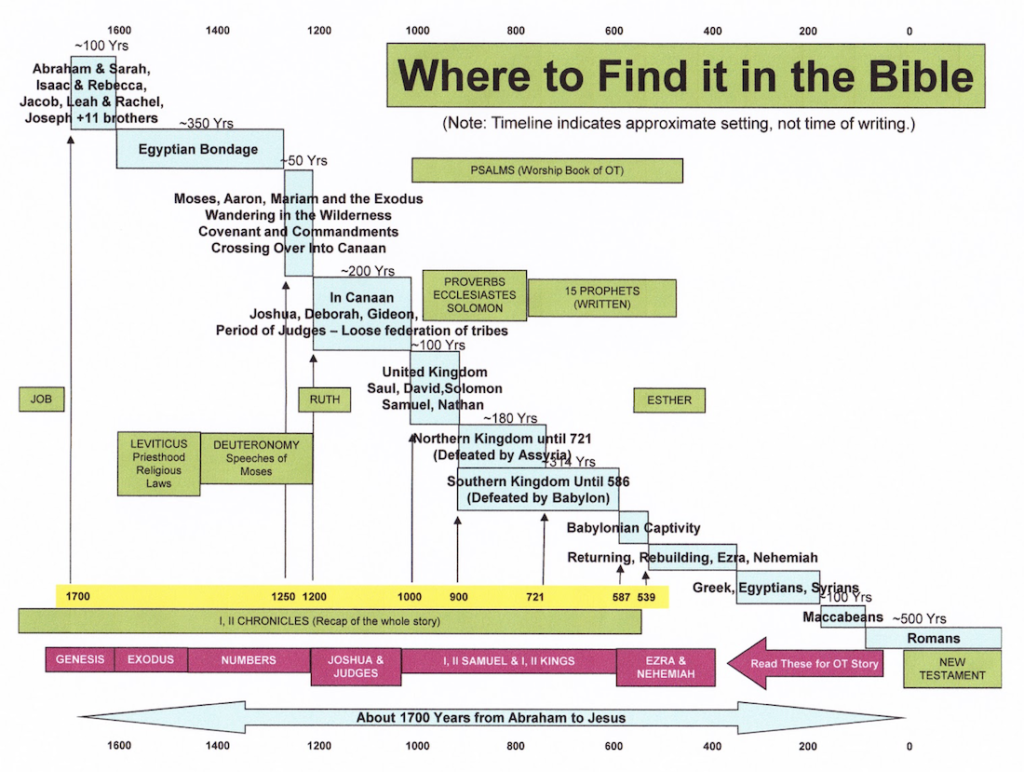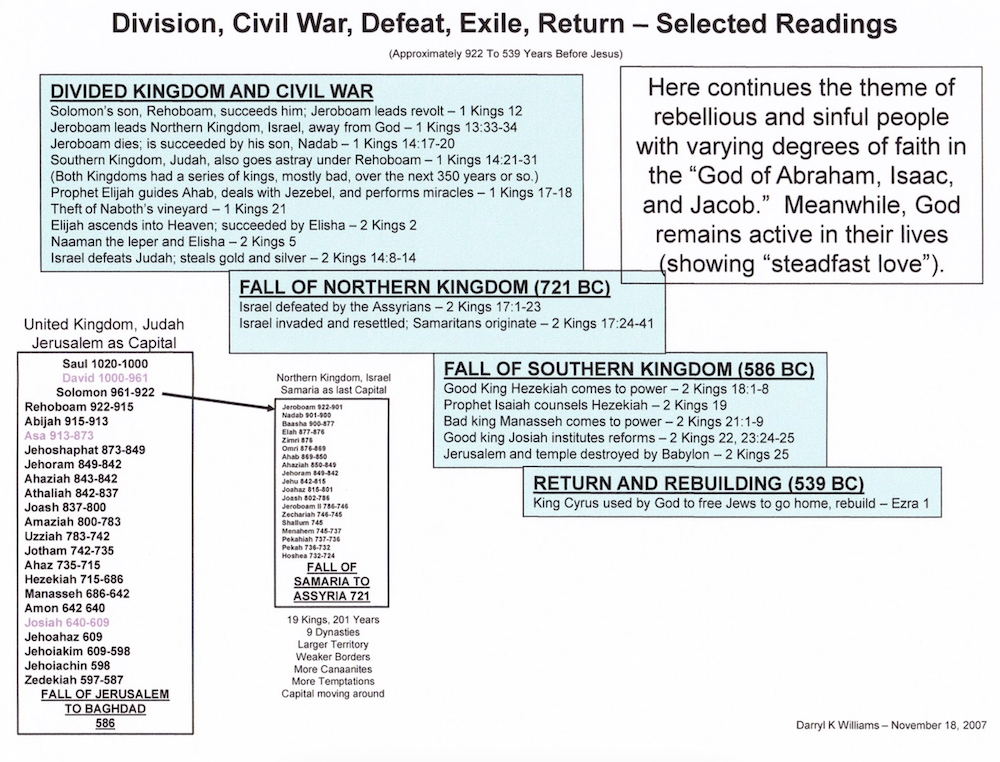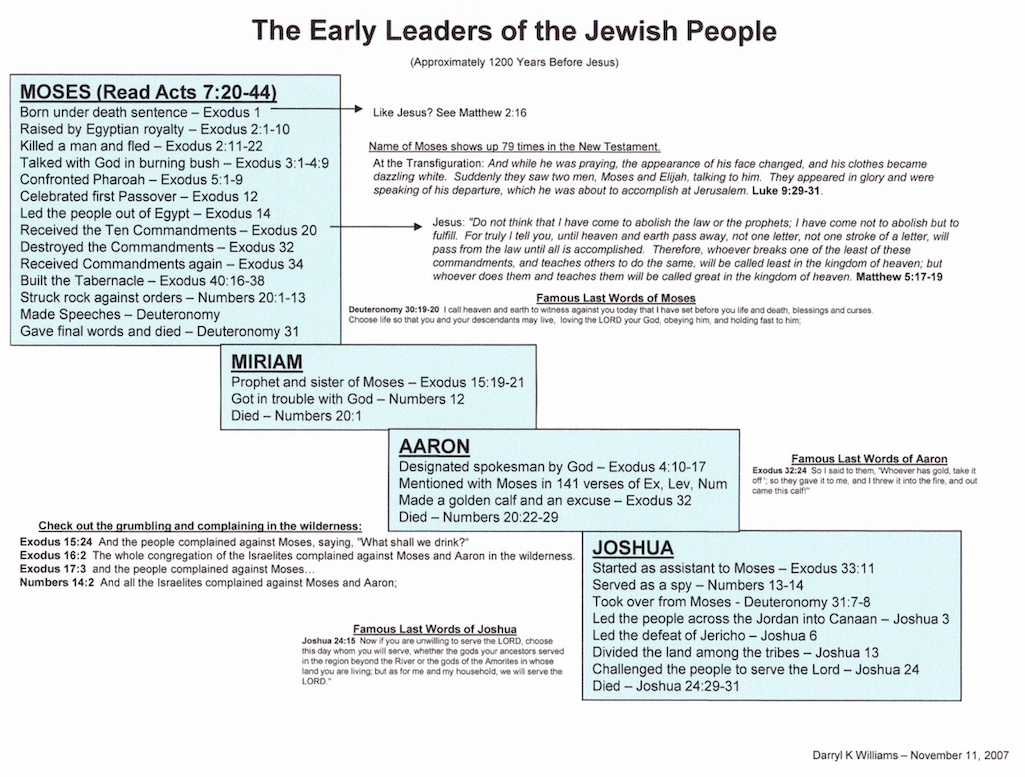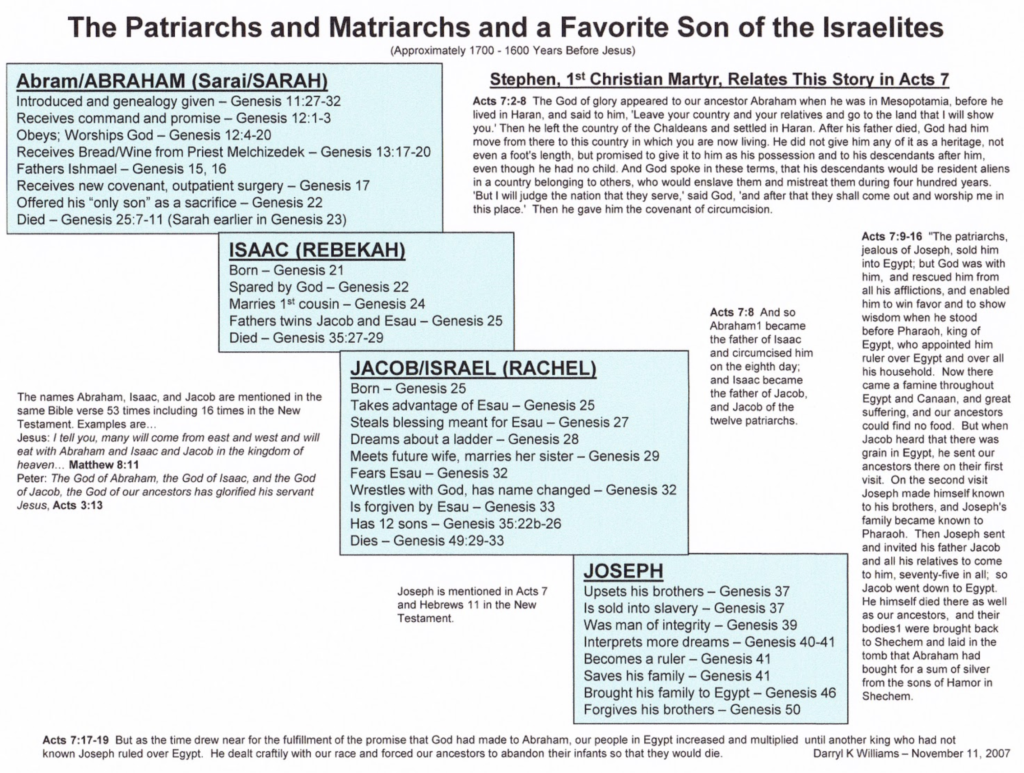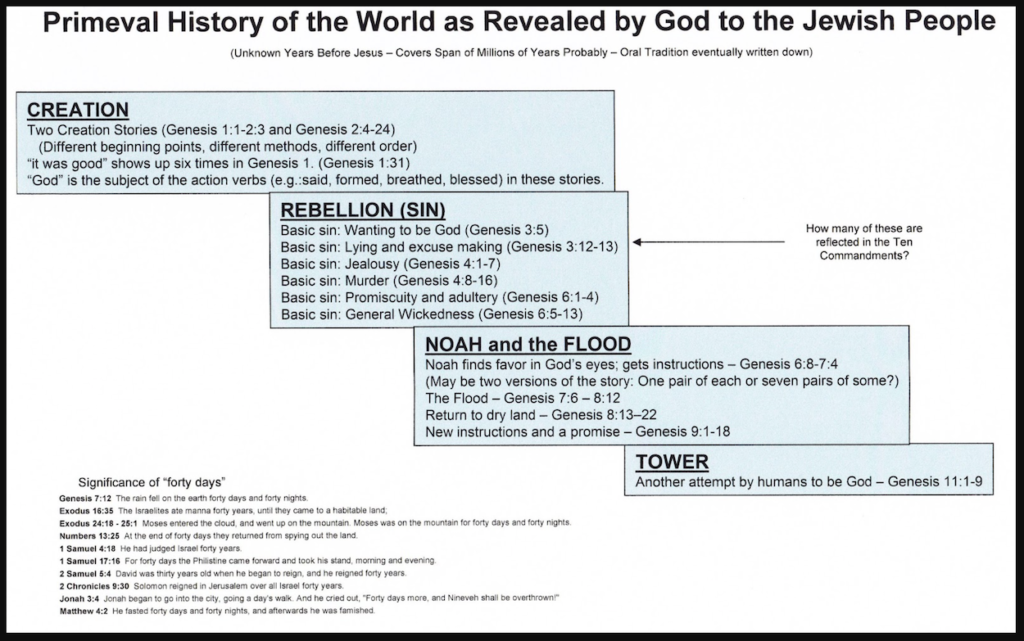In discussions among Christians it is common to be asked to share one’s favorite Bible verse. I don’t have a favorite movie, song, vacation spot, color, city, grandchild, or Bible verse. Except in the case of my one and only and therefore favorite wife, I just don’t think in terms of favorites but rather in terms of variety. A generous assessment of my failure to express favoritism might be that I am trying to be non-judgmental, except of course in the case of quantitative and objective things such as budgets, debts, and deficits. After all, it is still true that 2+2=4. But, rather than get involved in such an explanation when asked the favorite Bible verse question, I think I will, from now on, just settle on Ephesians 2:10, the last in the selection below, because it seems to me to encompass the meaning of the Christian life. Now, if I can just remember that verse!
Ephesians 2:1-10 NRS You were dead through the trespasses and sins 2 in which you once lived, following the course of this world, following the ruler of the power of the air, the spirit that is now at work among those who are disobedient. 3 All of us once lived among them in the passions of our flesh, following the desires of flesh and senses, and we were by nature children of wrath, like everyone else. 4 But God, who is rich in mercy, out of the great love with which he loved us 5 even when we were dead through our trespasses, made us alive together with Christ– by grace you have been saved– 6 and raised us up with him and seated us with him in the heavenly places in Christ Jesus, 7 so that in the ages to come he might show the immeasurable riches of his grace in kindness toward us in Christ Jesus. 8 For by grace you have been saved through faith, and this is not your own doing; it is the gift of God– 9 not the result of works, so that no one may boast. 10 For we are what he has made us, created in Christ Jesus for good works, which God prepared beforehand to be our way of life.
Lutherans put great theological emphasis on grace and faith over works. Google the word combination, “Lutheran we don’t have to do anything,” and you get quite a few hits focusing on that central element of Lutheran theology, that, as St. Paul wrote to the Ephesian Christians in the scripture quoted above, “…it is by grace you have been saved, through faith – and this is not from yourselves, it is the gift of God, not by works, so that no one can boast.” But that is not the place to stop reading, for he went on to write my “favorite” verse. So, it seems that although we are not saved by good works, we are saved for them so they seem to be an essential element of salvation. Now if we could just figure out what they are.
Of course that Lutheran position contrasts with what Lutherans often see as a Catholic emphasis on good works as a means of salvation. Googling, “Catholic works justification,” yields numerous hits explaining how wrong the Catholic Church is in emphasis on “works” along with very able defenses of the Catholic position on justification. Catholics never argue that we don’t have to do anything.
Because of this apparent divide and a belief on the part of many theologians that separation of the Body of Christ into denominations is not a good thing, Lutheran and Catholic theologians have engaged in ongoing dialogue for a number of years in an effort to reach agreement on various theological issues that have been stewing ever since Father Martin Luther raised them 495 years ago, and one result of that was a 1999 Lutheran Catholic Joint Declaration on the Doctrine of Justification. Of course such discussions and declarations are of little interest to average members of the respective bodies, but, as part of a seminary course, we read and discussed the 1999 Joint Declaration. That helped me understand why the average Catholic or Lutheran in the pews is not really very interested in the subject.
The opening statement in that ongoing discussion might be considered to have been a little pamphlet written by Father Martin Luther and delivered to Pope Leo X in 1520, three years after the posting of his Ninety Five Theses which got him in trouble. In that little pamphlet, Luther explored the relationship between works and salvation and tried to explain to Pope Leo X what “good works” are. During a History of Christianity course at Lutheran Theological Southern Seminary in 2002, I chose that pamphlet as the subject of a required paper. Here is that paper, after correction of a few minor grammatical errors pointed out by the professor. If the paper sounds very Lutheran, remember that I was one at the time and had not yet cast my vote in favor of greater and more visible Christian unity.
LUTHERAN THEOLOGICAL SOUTHERN SEMINARY
LUTHER’S USE OF THE TERM “WORKS” IN
THE FREEDOM OF A CHRISTIAN
DARRYL K. WILLIAMS
JANUARY 30, 2002
HT 102
HISTORY OF CHRISTIANITY
LUTHER’S USE OF THE TERM “WORKS” IN
THE FREEDOM OF A CHRISTIAN
DARRYL K. WILLIAMS
JANUARY 30, 2002
I. Introduction and Background
Having taken a public stand, on October 31, 1517, against the abuses of the Catholic Church hierarchy of the 16
th century, Martin Luther was under extreme pressure to recant or be declared guilty of heresy.
[i] Had he restricted his criticisms strictly to matters of theology, he might have been allowed to continue to toil in relative obscurity. However, he had touched the financial nerve of the church by attacking the sale of indulgences on which the economic strength of the Church and the wealth of its leaders had come to depend.
Luther’s positions, stated in the “Ninety Five Theses,” had been called to the attention of Pope Leo X who had authorized the most recent scheme for sale of indulgences and who was “one of the worst popes of that age of corrupt, avaricious, and indolent popes.”
[ii] Because Luther had support both from theologians, whom he had quietly convinced of the validity of his theses, and from Frederick the Wise, lord of Wittenberg, who wanted to be known as a wise and just ruler, Pope Leo X was not able to summarily squelch Luther. Instead, he sent emissaries, first Cardinal Cajetan and then Karl von Miltitz, to pressure Luther into recanting. Those efforts having failed, Luther was asked to write a conciliatory letter to Pope Leo X and agreed to do so and to send it along with a devotional booklet written especially for the purpose. The title of the booklet was
The Freedom of a Christian and, in the accompanying letter, Luther said of the booklet, “Unless I am mistaken…it contains the whole of Christian life in a brief form, provided you grasp its meaning.”
[iii]The Freedom of a Christian is in two parts. The first addresses the uselessness of “works” of any kind as a way to please God or to achieve salvation. The second addresses the necessity of good works for the believer. The focus of this paper is on Luther’s use of the term “works” and some examples and illustrations he uses.
II. Biblical (NRSV) Use of the Term “Works”
In the Old Testament, “works” used as a noun usually refers to the “wondrous” or “marvelous” or “wonderful” works of God. There are examples in 1 Chronicles and in Psalms. In the Gospels according to Matthew and John, “works” refers to things done by Jesus or by His followers for God or in the name of God. In the Sermon on the Mount, Jesus tells his listeners to “let your light shine before others, so that they may see your good works and give glory to your Father in heaven.”
[iv] In John’s Gospel, Jesus often speaks of doing the works of His father as when he spoke to his disciples in John 9:4: “We must work the works of him who sent me.” Jesus further makes it clear in John 14:12 that Christians are to carry on the works He has been doing after he leaves: “Very truly, I tell you, the one who believes in me will also do the works that I do and, in fact, will do greater works than these, because I am going to the Father.” Finally, in John 6:29, Jesus states the essential truth on which Luther’s theology seems to be based: “This is the work of God, that you believe in him whom he has sent.” The belief of the Christian depends not on anything the Christian has done but solely on a “work of God.”
Most discussion of works both in the Bible and in
The Freedom of a Christian focuses on works that are, at least from the human viewpoint, good. Little is said of works that are obviously evil, though Jesus does say in John 7:7 that the world hates Him because of his testimony “against it that its works are evil.” Both Galatians and Romans use “works” as an important theological term. In Galatians it is almost always “works of the law” referring to compliance with the Jewish laws which, of course, was not an issue for Christians in Luther’s time. The point in Galatians was that New Testament believers were free from requirements to comply with those laws. In Romans, the meaning of “works” includes “works prescribed by the law,”
[v] but seems to extend also to whatever a person does. The letter to the Romans fully explores the relationships among works, grace, faith, and justification.
Luther made no secret of his high opinion of the theological importance of Romans:
This Epistle is really the chief part of the New Testament and the very purest Gospel, and is worthy not only that every Christian should know it word for word, by heart, but occupy himself with it every day, as the daily bread of the soul. It can never be read or pondered too much, and the more it is dealt with the more precious it becomes, and the better it tastes.
[vi]Paul’s epistle to the Romans is cited approximately twenty times in The Freedom of a Christian. It is not surprising that Luther used the term “works” in the same way Paul used it in Romans. For Luther, writing during a time when compliance with ancient Jewish laws was no longer an issue, “works” more clearly refers to all the things a person does. That is a reasonable extension of thought since those ancient Jewish laws had applied to almost everything the ancient Jew did. Just as clarification of the relationship between Jewish law and salvation through Christ was the goal of St. Paul, clarification of the relationships of works, grace, faith, and justification seems to have been Luther’s goal.
III. “Works” in The Freedom of a Christian
Early in the treatise, Luther makes the point that works of a religious nature such as praying, fasting, adorning the body, or dwelling in sacred places are in themselves neutral, neither helping nor hurting the soul. “It does not help the soul if the body … fasts … it will not harm the soul if the body…eats and drinks as others do.” He goes on to say that the reason such works, in themselves, are neutral is that they can all be “done by any wicked person” and are “things which hypocrites can do.”
[vii] Luther’s belief was that it is the spiritual condition of the person doing a work that determines whether the work is good or not and that it is only God who can make a person’s spiritual condition right for doing good works. That belief seems to reflect the words of Jesus quoted earlier that the most important work is trusting Him whom God had sent.
Luther used trees and fruit as a parable of Christians and their good works:
As it is necessary, therefore, that the trees exist before their fruits and the fruits do not make trees either good or bad, but rather as the trees are, so are the fruits they bear; so a man must first be good or wicked before he does a good or wicked work, and his works do not make him good or wicked, but he himself makes his works either good or wicked.
[viii]Luther illustrates this counter intuitive truth by an interesting and perhaps surprising example of a work pleasing to God. The example is Adam’s tilling and cultivation of the garden in Eden. Because Adam was created righteous, with no need of justification, and was given the gardening task by God, that task “would truly have been the freest of works, done only to please God and not to obtain righteousness…”
[ix]Similar to the example of a tree and its fruit is that of a bishop and the official duties of his office. The bishop is not made a bishop by the performance of those duties, but the performance of the duties is deemed valid because the person already holds the office of bishop. In the same way, the free and willing good works of a Christian are valid because of the person’s Christianity, a gift from God, and in no way make him or her a Christian.
[x] Thus, for Luther, the important questions are not about “what works and what kind of works are done, but who it is that does them, who glorifies God and brings forth the works.”
[xi]Luther also mentions the good work of caring for one’s own body.
[xii] He refers not to a narcissistic or egotistic self centeredness but to caring for one’s body in order that one might be able to serve others through working to earn money and giving it to those in need, willingly and with no interest in reward. Luther makes the point that it is because there is no need for good works to achieve one’s own righteousness and salvation, that the Christian is freed from thinking of his own needs and interests and is totally free to serve others just as Adam was totally free to till the garden in Eden.
[xiii]Motivation, in Luther’s theology, seems to be the key to good works, and pure and positive motivation seems to be possible only for those who are believers experiencing the grace of God. “Any work that is not done solely for the purpose of keeping the body under control or of serving one’s neighbor, as long as he asks nothing contrary to God, is not good or Christian.”
[xiv] Luther follows these criteria with an expressed concern that “few or no colleges, monasteries, altars, and offices of the church are really Christian in our day”
[xv] because people were seeking profit, in the form of salvation, in those institutions.
Luther’s clearest statement of appropriate works and attitude toward works for the Christian seems to be this: “Hence, as our heavenly Father has in Christ freely come to our aid, we also ought freely to help our neighbor through our body and its works, and each one should become as it were a Christ to the other that we may be Christs to one another and Christ may be the same in all, that is, that we may be truly Christians.”
[xvi] This summary statement clearly connects and reconciles the Gospel teachings of Jesus about the works of the Father and the theology of works, grace, and faith expressed by St. Paul in the Epistles to the Romans and to the Galatians.
Thanks be to God!
[i] Historical details are taken from Justo L. Gonzalez,
The Story of Christianity: Vol. 2, The Reformation to the Present Day (San Francisco: HarperSanFrancisco, 1985) 1-28.
[iii]Luther, M. 1999, c1957.
Luther’s works, vol. 31 : Career of the Reformer I (J. J. Pelikan, H. C. Oswald & H. T. Lehmann, Ed.). Luther’s Works. Vol. 31 (Vol. 31, Page 343). Fortress Press: Philadelphia
[iv] NRSV, Matthew 5:16. All Bible quotations in this paper are from the New Revised Standard Version.
[vi] Robert L. Ferm,
Readings in the History of Christian Thought (New York: Holt, Rinehart, and Winston, Inc., 1964), 340.
[vii] Luther, M. 1999, c1957.
Luther’s works, vol. 31 : Career of the Reformer I (J. J. Pelikan, H. C. Oswald & H. T. Lehmann, Ed.). Luther’s Works. Vol. 31 (Vol. 31, Page 345). Fortress Press: Philadelphia
BIBLIOGRAPHY
Ferm, Robert L. Readings in the History of Christian Thought. New York: Holt, Rinehart, and Winston, Inc., 1964.
Gonzalez, Justo L. The Story of Christianity, vol. 2, The Reformation to the Present Day. San Francisco: HarperSanFrancisco, 1985.
Luther, M. 1999, c1957. Luther’s works, vol. 31 : Career of the Reformer I (J. J. Pelikan, H. C. Oswald & H. T. Lehmann, Ed.). Luther’s Works. Vol. 31 (Vol. 31, Page 345). Fortress Press: Philadelphia
